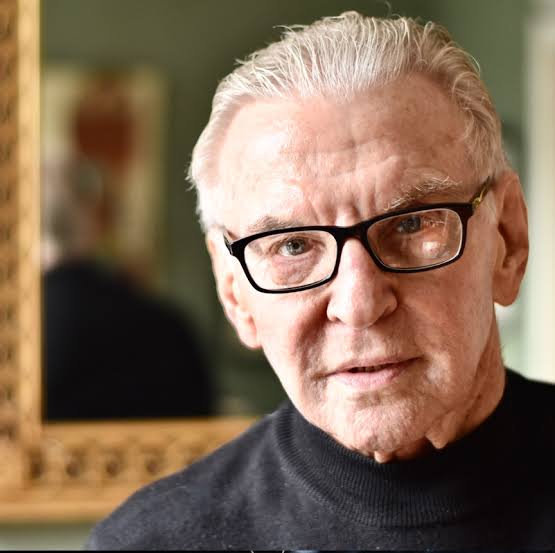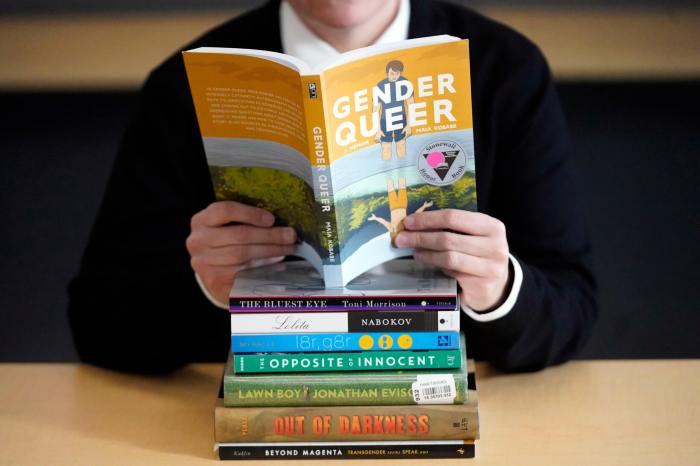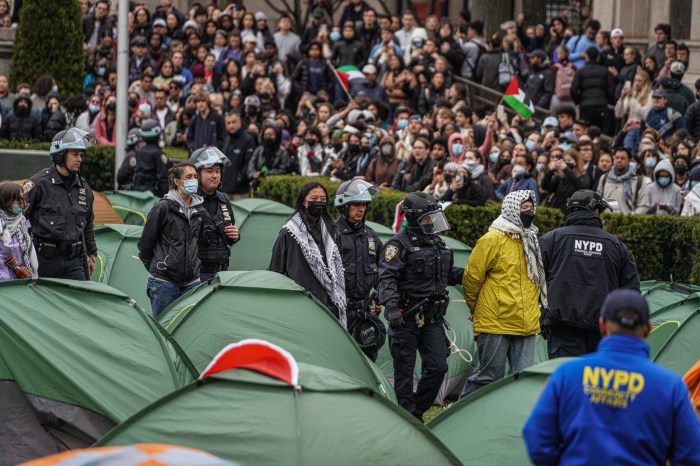If you’re one of those people who think history is dull, boring, and irrelevant to your life today, Michael Bronski’s brilliant new “Queer History of the United States,” just published by Beacon Press, should disabuse you of such blinkered notions.
Bronski has been one of our most articulate and original gay liberationist writers and journalists for decades. His roots are in the feisty, radical Boston collective that produced Fag Rag, one of the seminal liberation publications that flowered in the early ‘70s, and he made his bones as a gay theorist with his important 1984 book “Culture Clash: The Making of Gay Sensibility,” and cemented his reputation as a creative thinker with “The Pleasure Principle” (1998), which remains a must-read for every sentient queer.
In addition to a half-dozen other books he’s either written or edited, the prolific Bronski’s cultural and political journalism has adorned not only the gay press but mainstream publications, as well. A longtime columnist for the Boston Phoenix, Bronski now teaches LGBT, gender, and media studies at Dartmouth.
But, thankfully, Bronski doesn’t write like an academic –– his cant-skewering prose is clean, clear, jargon-free, and accessible, as befits his journalistic training. And “A Queer History of the United States” is such a good read it could be called a page-turner, were it not for the fact that practically every page is so rich with provocative and gripping observations, ideas, and analyses that one wants to pause and reflect on them.
“America is queer,” writes Bronski, “and only gets queerer.” This sweeping synthesis of 500 years of American history as seen through a myriad of queer eyes –– building on the last four decades of groundbreaking gay historiography that began recovering our hidden history as a crucial part of the early liberation struggles –– contains many eye-opening anecdotes and portraits that illustrate this ringing assertion.
Bronski shows how same-sex affinities were practiced and, indeed, often honored by Native Americans even before the first European colonists arrived with their censorious and repressive religions.
To cite just two examples, the 1702 “Memoir of Pierre Liette on the Illinois Country” reported that “the sin of sodomy prevails more among [the Miami] than in any other nation, although there are four women to one man.”
And in the “Original Journals of the Lewis and Clark Expeditions,” written by Nicholas Biddle between 1804 and 1810, the explorers detail how, among the Mamitarees, “if a boy shows any symptoms of effeminacy or girlish inclinations he is put among the girls, dressed in their way, brought up with them, & sometimes married to men.”
Queers were active participants in the Revolutionary War. The cross-dressing Deborah Sampson Garret enrolled as a man in the Continental Army and fought in may battles over three years before her real gender was unmasked after she was wounded. She published a popular memoir of her exploits, and in 1816, “after years of petitioning and with help from Paul Revere, [she] was finally awarded the full pensions she deserved by both the state of Massachusetts and Congress.”
And there was the combative evangelist Jemima Wilkinson, who in 1775 “believed that Christ entered her body and that she was now neither female nor male… She renamed herself ‘Publick Universal Friend,’ refused to use the pronouns ‘she’ or ‘he,’ and dressed in gender-neutral garments that made her sex unreadable.” In the mid-1780s “the popular press and pamphlet culture covered her sermons in detail and placed particular emphasis on her sexually ambiguous persona. She had a huge following that verged on a cult…”
We might today call Wilkinson and Sampson Garret transgender, but Bronski rightly warns us against applying today’s labels and language to gender rebels of centuries past before such terms were coined and acknowledged. (Bronski details how cross-dressing female soldiers were also well known in our Civil War).
Bronski traces the development of a “new American masculinity” in contrast to the overly civilized, effete British model. Indeed, the very first play written and produced in the US, a comedy of manners called “The Contrast, “ pitted a British-identified character, “Mr. Billy Dimple” –– a “flippant, pallid, polite beau who devotes the morning to his toilet… and then minces out” –– against the American Colonel Manly, “who is all that his name implies.” This political, even revolutionary play clearly enlisted what today we would characterize as homophobia to stir up anti-British sentiment.
But in the newly liberated colonies, “passionate same-sex friendships were often public and acknowledged by the culture in which they thrived.” Bronski extensively quotes from the Marquis de Lafayette’s concupiscent letters to George Washington which “can be read as communications from a hurt, angry lover.”
As the new country grew in size, “westward expansion often meant a release from the enforced gender restrictions they faced in the East… Life on the western frontier was frequently sex-segregated, creating homosocial communities and relationships,” which Bronski illustrates through citations from poetry and fiction of the time, as in Western poet Badger Clark’s “The Lost Pardner,” which concludes:
The range is empty and the trails are blind,
And I don’t seem but half myself today.
I want to hear him ridin’ up behind
And feel his knee rub mine the good old way.
The rapid growth of San Francisco in the wake of the 1840s Gold Rush led to a city that in mid-century had only 300 women out of a population of 25,000 –– not surprisingly, “same-sex dancing was perfectly acceptable, as was entertainment featuring cross-dressing.” Already in 1855, British adventurer Franky Marryat, in his memoir “Mountains and Molehills, or Recollections of a Burnt Journal,” labeled San Francisco “Sodom by the Sea.”
Bronski underscores the importance of New England’s transcendentalist movement in refining same-sex affinities. “A wealth of homoerotic sentiments are present in the poems and journals of Henry David Thoreau… which by the 1840s became increasingly erotic,” while Ralph Waldo Emerson’s infatuation with a young student, Martin Gay, is explored. And “the homoerotic content in Emily Dickinson’s poetry is notable for its time,” as are the writings of Herman Melville and Nathaniel Hawthorne –– including “Melville’s articulation of erotic attraction for Hawthorne.”
Julia Ward Howe, author of the “Battle Hymn of the Republic,” also wrote a play, “The Hermaphrodite,” which is “a manifestation of a culture in which gender role limitations and nontraditional sexual relationships were actively, albeit in a coded way, discussed as political issues.”
But in the second half of the 19th century, it was the American anarchists whose “writings about homosexuality are a radical break from most thinking in the late 19th and early 20th centuries: they argue that sexuality is natural and positive, that sex can be solely about pleasure and, if consensual, should not be the subject of any laws.”
At the same time, “the scientific discovery of ‘homosexuality’ [the term was first used in the US in 1878] generated language that promoted more open discussion about the subject —ironically, it immediately led to a clear articulation of negative stereotypes about homosexuals. For the first time in US history, same-sex desiring people could now feel diseased.”
Bronski traces the crucial role the theatrical stage played as a transmission belt for discussions of a wider spectrum of sexualities. He’s unearthed examples that –– even though I consider myself fairly well versed in homo history –– were new to me. For example, “the opening scene of Mae West’s 1927 play ‘The Drag’ –– featuring homosexual characters and a drag ball –– has two characters discussing the ideas of Karl Ulrichs,” the 19th century German agitator for homosexual liberation who is considered the pioneer of the LGBT movements for sexual liberation. The play was closed down by authorities, as was the iconic Yiddish playwright Sholem Asch’s classic 1907 drama “The God of Vengeance” for its lesbian content.
Such widespread stage portrayals contributed to the Republican-controlled New York State Legislature’s vote to ban any theatrical performances “depicting or dealing with the subject of sex degenerates or sex perversion.”
As automobiles became cheaper and available to the masses, Bronski notes, they became “the site of sexual freedom,” a “new innovation in romantic and sexual privacy [that] was also a boon to same-sex relationships.”
The sexual revolution for queers sparked by World War II received the ultimate and peculiarly American tribute when it found expression in advertising –– as exemplified in a campaign for Cannon Towels that ran in magazines like Life and Better Homes and Gardens, each installment based on servicemen’s tales. “True Towel Tales: No. 6” showed “a group of presumably naked soldiers in a grounded canoe; the central figure is standing, covered with a palm frond, in a bathing-beauty pose. The advertisement clearly displays the men as sexual objects and highlights their vulnerability, in sharp juxtaposition to the realities of war.”
Similarly, an ad for Pullman railroad sleeping cars showed two soldiers taking off their shoes and socks to enter an Egyptian mosque with the sexually suggestive caption, “I never did this in daylight before!”
These are just a few of the many revelatory historical nuggets in “A Queer History of the United States.” Bronski has an extraordinary command of the material and also does a masterful job of synthesizing the work of fine gay historians, including Martin Duberman, John D’Emilio, Lillian Faderman, Terence Kissack, and dozens of others too numerous to mention.
The war on same-sex imagery and writing currently waged by today’s “family values” crowd has, as Bronski demonstrates, its precursors in the social purity movements, sometimes led by progressives, that began in the 19th century and continue today to threaten the larger cultural space that courageous same-sexers have won for themselves. This book is also a catalogue of our enemies down through the years.
Bronski’s radical liberationist politics are evident on every page and will no doubt irritate the oh-so-homogenized assimilationists whose rhetoric dominates today’s official gay discourse. He writes, “While we are all Americans –– and heterosexuals may be a lot queerer than they think –– being ‘just like you’ is not what all Americans want. Historically, ‘just like you’ is the great American lie. The overwhelming, even giddy diversity of America precludes such simple analogies. ‘Just like’ is often a false argument. In the past decade, the argument that same-sex marriage is ‘just like’ inter-racial marriage has led to far more misunderstanding and anger than agreement and clarity…”
Bronski’s examination of five centuries ends in 1990, but his impeccable scholarship and pungent, often witty narrative is as relevant as today’s headlines. One has to know where one’s been to be able to chart a meaningful course to where one would like to be. From literature to fashion to relationships with other social movements, the queer story as told by Bronski will open your eyes.
The great historian Arnold Toynbee once observed, “‘History’ is a Greek word which means, literally, just ‘investigation.’” Bronski is a superb investigator, intellectually rigorous, whose work has always challenged conventional wisdoms with subtle nuance. That’s why “A Queer History of the United States” can be profitably read both by novices on the subject and by those with a serious background in gay historiography.
Even if you disagree with Bronski’s interpretations, they will make you think. This is an important book, one that should have pride of place on every queer bookshelf. Make sure it’s on yours.
Essentials:
A QUEER HISTORY
OF THE UNITED STATES
By Michael Bronski
Beacon Press
$27.95; 286 pages


































